“Wake up, Paul,” my Mom would whisper as she rustled my hair or gently moved me to wake. The warmth of the bed and the radiator's heat were asking me to do something else. I resisted for a moment digging deeper under the blankets.
“Quick, look out the window. There’s a couple of cardinals on the bird feeder,” she said excitedly.
This would get me up. I loved the beautiful bright red of the male cardinals. I did not know the term plumage dimorphism then, I only educated myself on that 5 minutes ago.
“Oh, look, over there on the shrubs in the back, there is a blue jay,” she whispered. I think she thought the birds might hear us through the storm windows. She was probably right that any loud noise might have them scatter. We would huddle close to the window and peer out from upstairs or my Mom would move us down to her bedroom to get a closer look at ground level.
My Mom loved birds.
From seagulls to eagles, she was fascinated whenever one crossed her path. She passed that on to me at an early age. My knowledge of species was not my game but the thrill and enjoyment of seeing them up close or flying brought great joy to my heart. When we traveled we had a bird book so we could make note of our new feathered friends we came across. Twitchers we were not. We were just amazed by the beauty of nature and liked to know what we saw.
Before I forget, that new term I now have, “plumage dimorphism”, describes the difference in plumage of male and female birds. In many species, the male is more colourful and ornamented than the female. What happened to us humans? We certainly did not take after birds, for the most part.
This was my introduction to birds and a somewhat continuing love of nature that was enjoyed by my mom in our suburban town 30 minutes from New York City. Although we did not have much bush around us, we had our yard, and we took note of what happened there and in the trees across the street in the school yard. We were observant of what went on around us. Maybe the world was not as distracting as it is today.
Fast forward to 2024 and I found myself in the bush in Victoria just an hour outside of Melbourne with a bunch of other bird fanciers. We were not twitchers, although I think some there might garner that title, we were there to learn about birds from Andrew The Bird Guy. I love his moniker and my gal thinks I am her bird guy. Talking to magpies or running after a yellow-tailed black cockatoo to watch it in flight, she thinks I am a bit spare. Thanks for putting up with me, Sparkles.
Andrew Turbill is The Bird Guy. Spending a few days in his presence, with a few dozen others, we learned about birds and their language. Andrew’s finely tuned humour and deep knowledge of his subject matter made the time fly as he told us tales about his experiences with birds and life in and around the bush.
We camped for 3 nights, had wholesome and beautifully cooked food, and had the joy of communing in nature to learn more about just a few of the species that we came across. We listened intently to their calls and went beyond the song. Learning that birds have calls for courtship, alarm, territorial, bickering, mimicry, and more. I was astounded and my ears have gone to a new level. As I sit here typing away I hear the morning currawong in my yard in St. Kilda and the magpies warbling out front and I just saw the ever-present mourning doves in the yard hoping for some leftover dog food.
We learned to sit in the woods and quietly observe in our sit-spots and take note of sound and vision of what happens around us. This is a part of nature that I love and I do it often but not with such a bird-intent focus. I cannot thank Andrew enough for sharing his stories and knowledge with me and the group.
You may want to get started now if you want to start learning about all the birds.
Why?
Based on a study done in 2021 (https://www.pnas.org/doi/full/10.1073/pnas.2023170118) there are about 9,700 bird species and there are somewhere between 50 billion and 428 billion birds on our planet. This range is so broad due to various uncertainties—among them, the difficulty of counting billions of small animals that can fly, the wide and often unclear ranges over which birds roam, and a lack of scientific data in many areas of the world.
WOW
Many iconic Australian birds are numbered in the millions, like the Rainbow Lorikeet (19 million), Sulphur-crested Cockatoo (10 million), and Laughing Kookaburra (3.4 million). But other natives, like the rare, Black-breasted Buttonquail, only have around 100 members left. I don’t have the space to list the numbers for each species.
It’s more than a lifetime of work studying the birds in your neighbourhood. Don’t get overwhelmed, just enjoy their magic.
This Bird Language Retreat is not about simply birdwatching. It is about paying attention to nature, to all our relations. Many of us 2 legged types believe we are separate from nature. Those amongst us who are smarter know that we are not. Sitting in the bush, connecting with the environment, and listening and watching are skills that the indigenous before us and today know more than us colonials.
Slowing down is a skill.
We were all gathered in a circle on an open field playing a game on the last day. As if on queue an immense wedge-tailed eagle flew directly overhead. Everyone was amazed as it flew at treetop while being pestered by a couple of magpies. For me, I had never seen that eagle so close, and I think my mouth was ajar in wonder.
Here is a video of the game predator and prey we played on the final day. What a hoot! Simply, 2 people were predators and 4 were prey and all were blindfolded. The idea was to eat or not be eaten.
Joining us on this adventure was rewilding facilitator Claire Dunn. Her connection to nature and assistance with us moving into this space was delightful. Check out Claire’s stuff here:
https://www.naturesapprentice.com.au/
She also turned us onto a blindfold string walk game that opened up our senses.
This was Andrew’s first foray into a retreat in Victoria. I highly recommend, if you have even a small interest in our winged mates, that you check out his webpage and go along to a retreat if life permits.
Gotta fly!
Click on the Insta thing below…for a laugh
See below for another bird experience in 2023…..
The Yellow Tufted Helmeted Honeyeater
Blue sky and sunshine and the bed is warm and cosy. The Bureau Of Meteorology announces that we are in single digits. You don’t need a weatherman to tell you which way the wind blows or where the mercury lies. Thanks for reading Take A Step Outside My Inside! Subscribe for free to receive new posts and support my work.


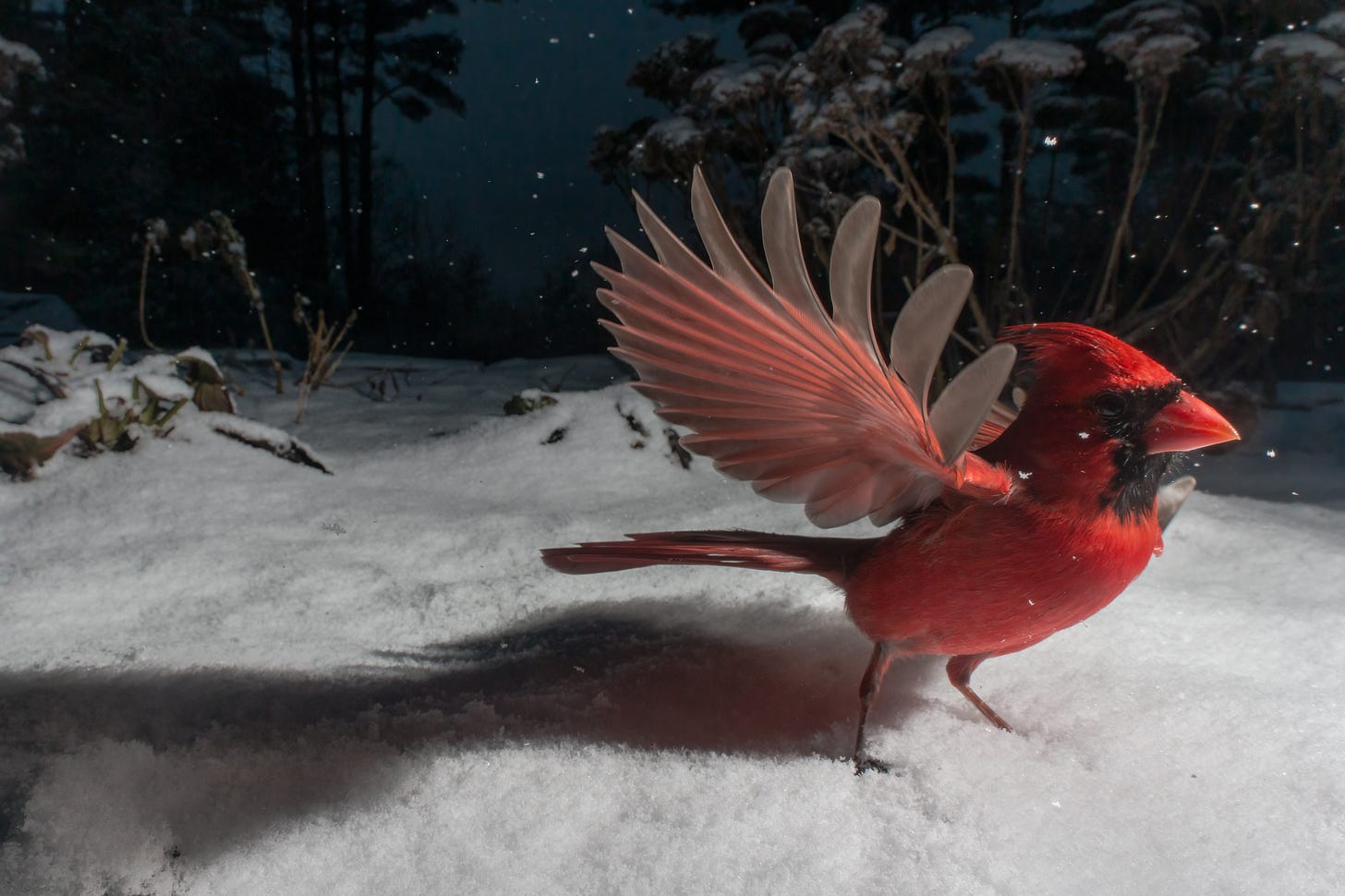

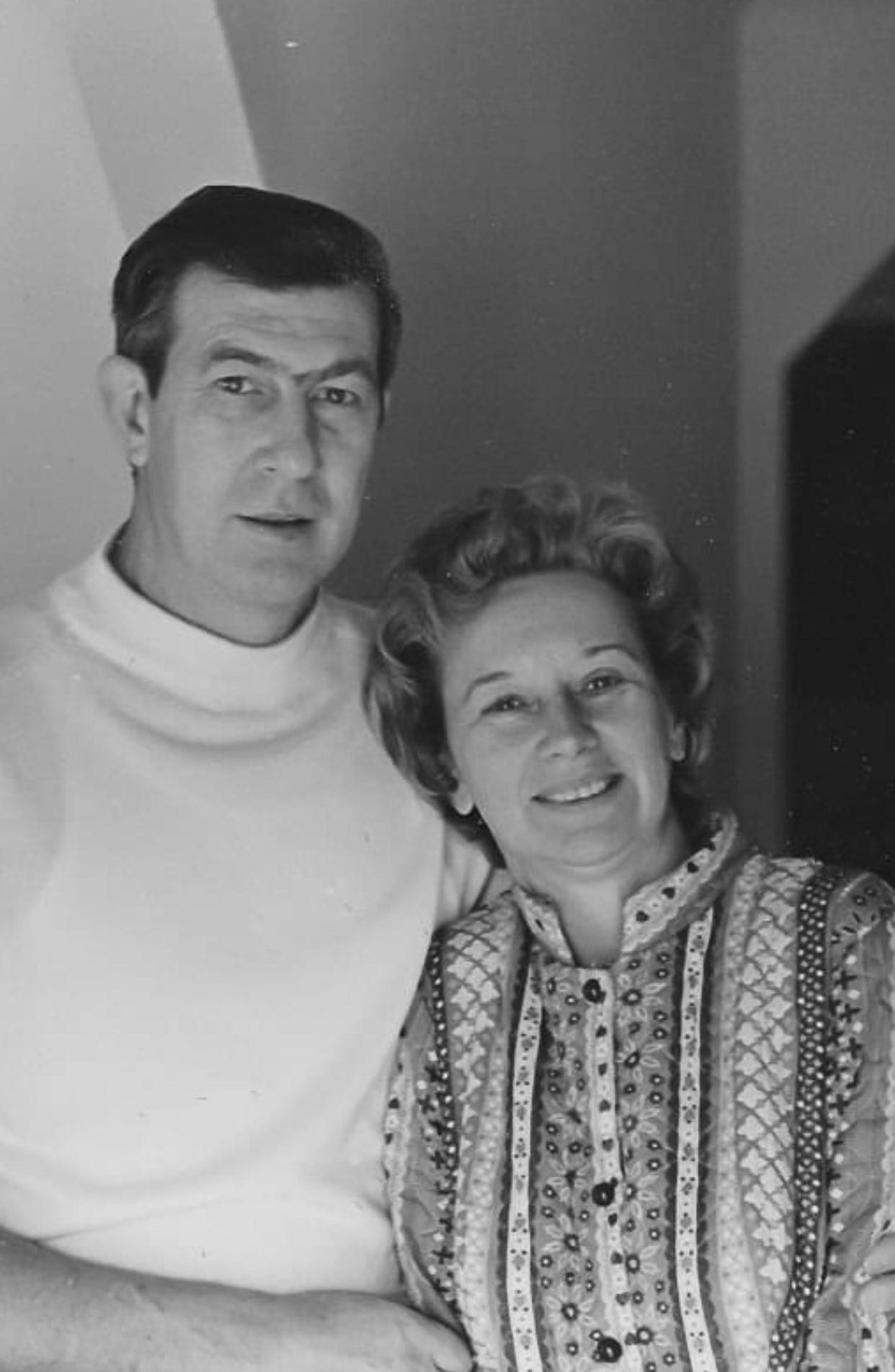
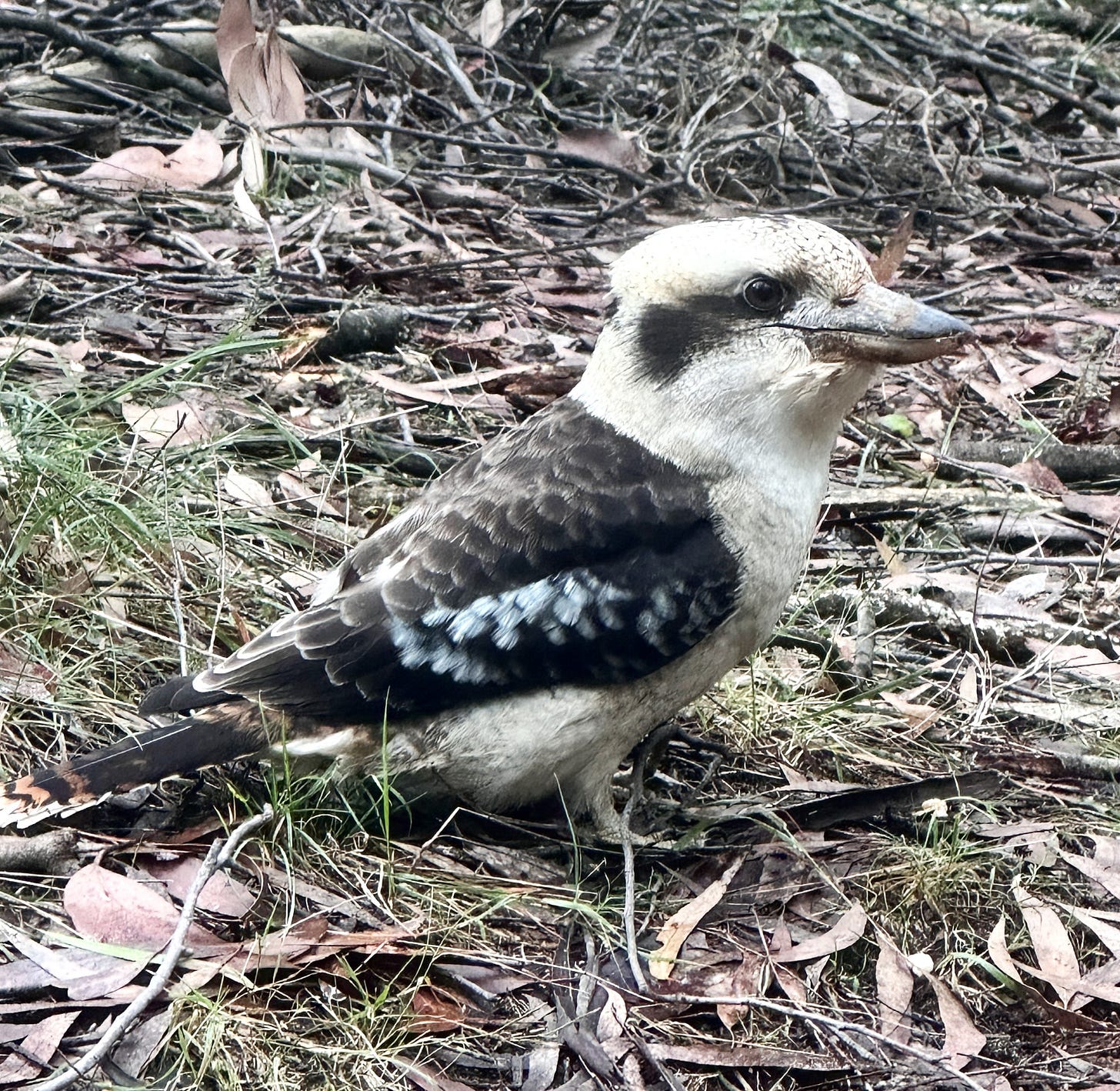
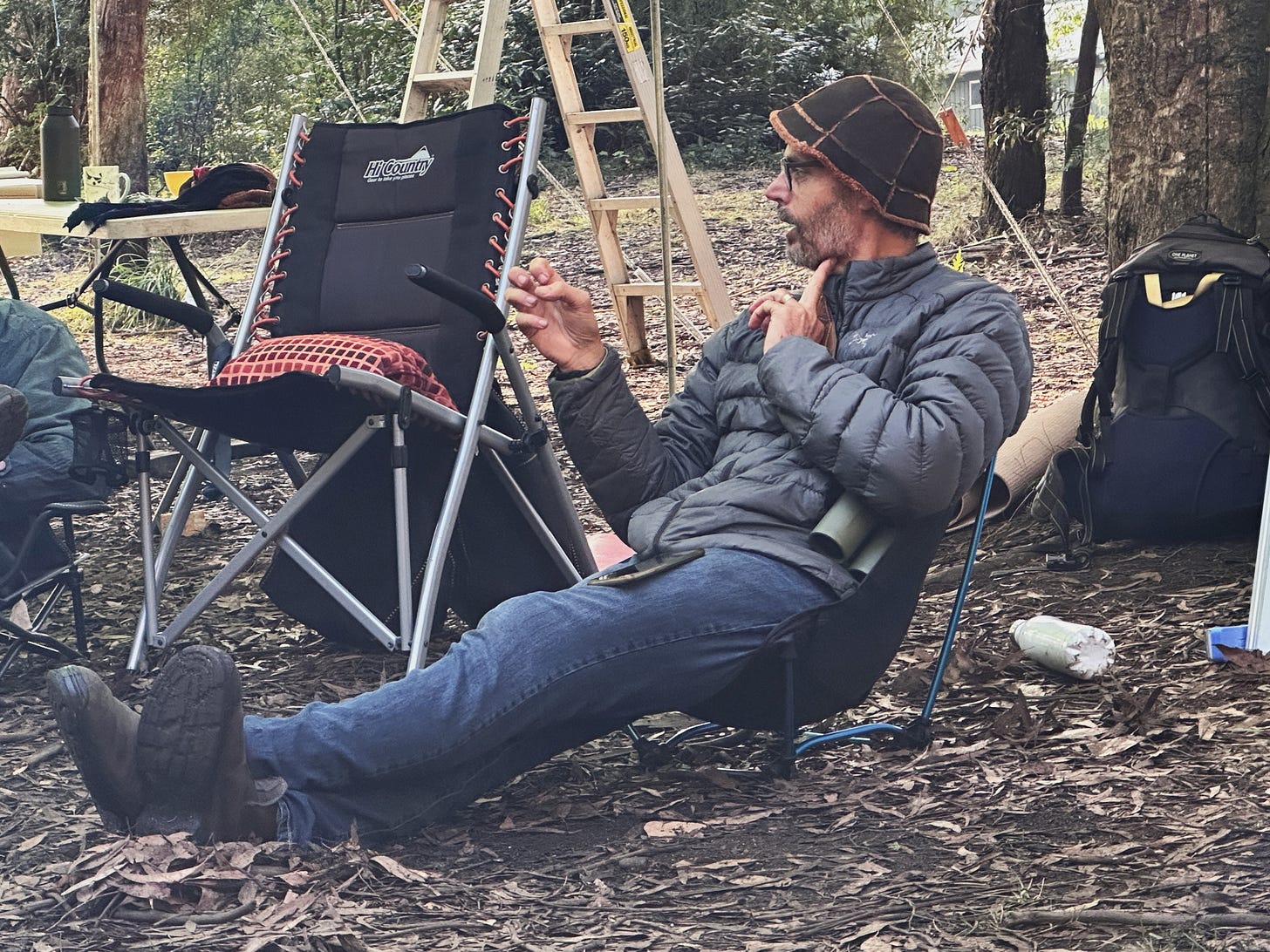
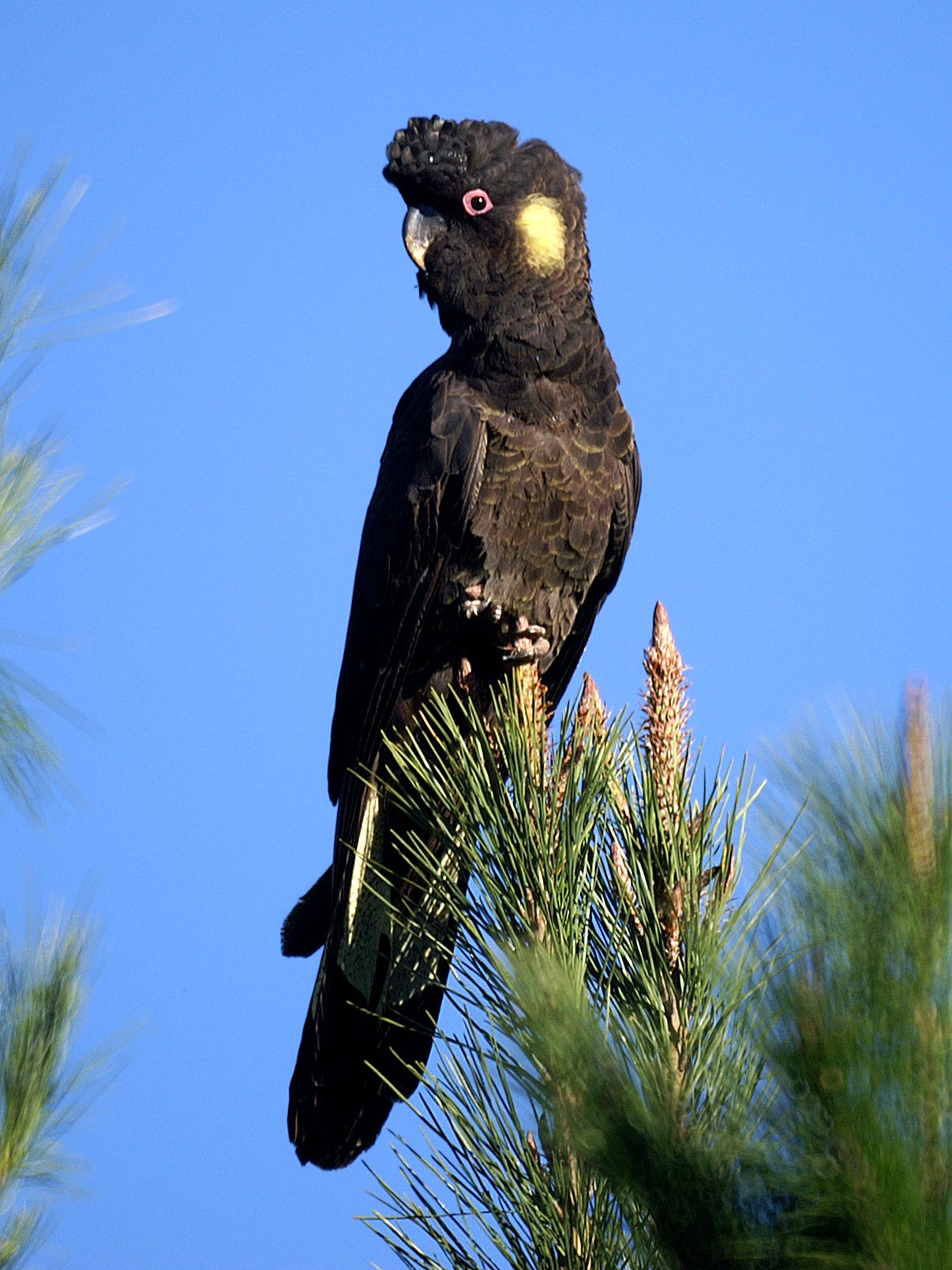

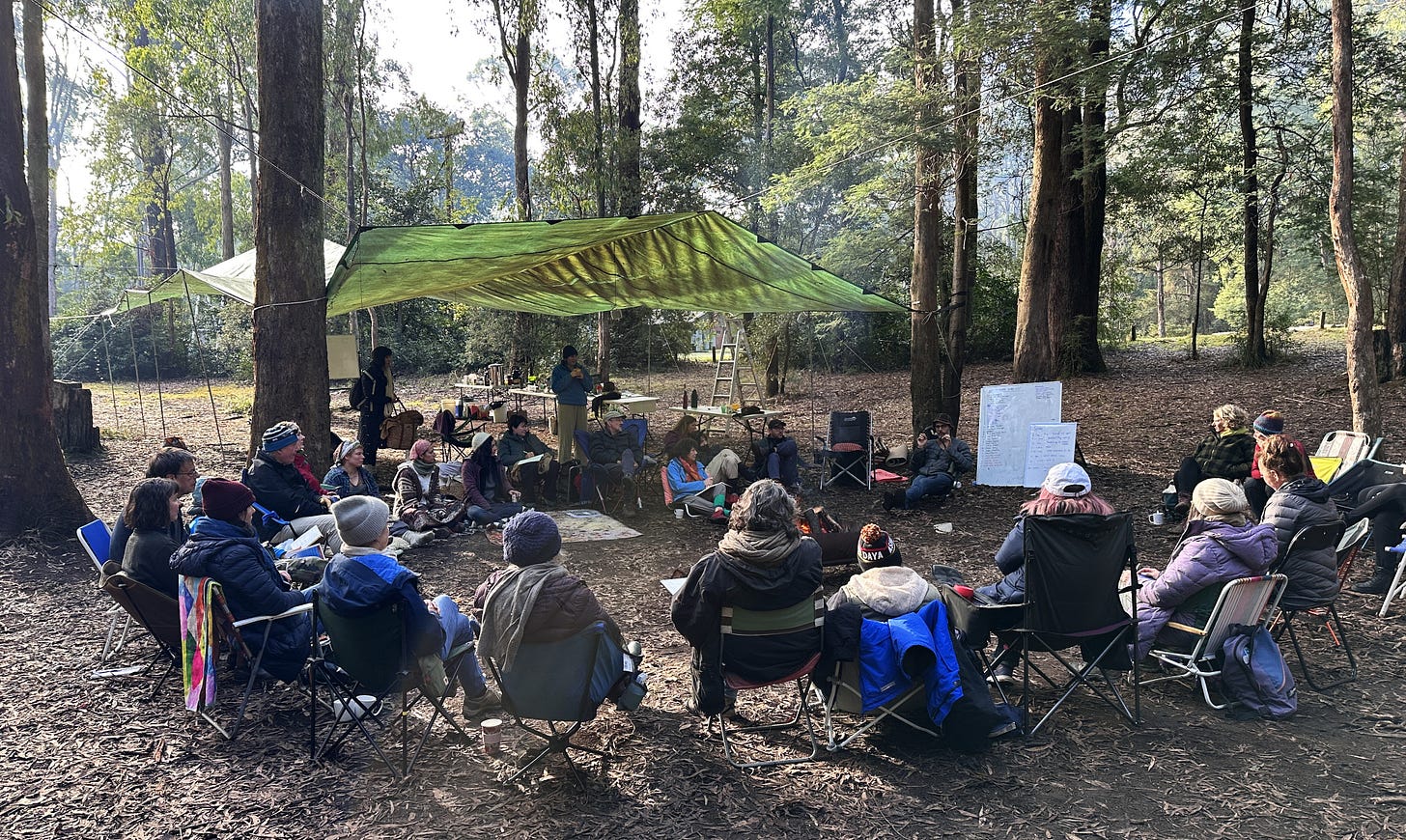

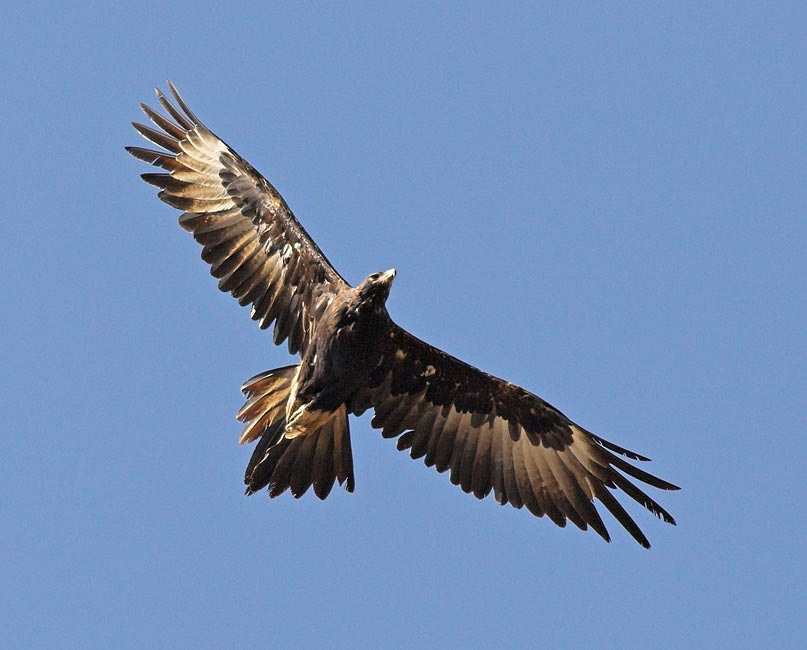


This sounds like a fantastic experience and what a great way to get people out of their heads and phones and start looking up and around.
I grew up in West Oz and our summer mornings started at about 4am with the galahs, numbering in their hundreds, would start sliding down our tin roof!
I still remember being on the school bus when I was about 7 years old and watching a fox running like mad across a paddock, with a wedge tail eagle swooping down behind it. The wedge tail unfortunately came to a grinding halt as it flew into a fence that the fox had ducked through. Unfortunately didn't get to see the rest of the pursuit which I'm sure continued once the eagle came to it's senses!